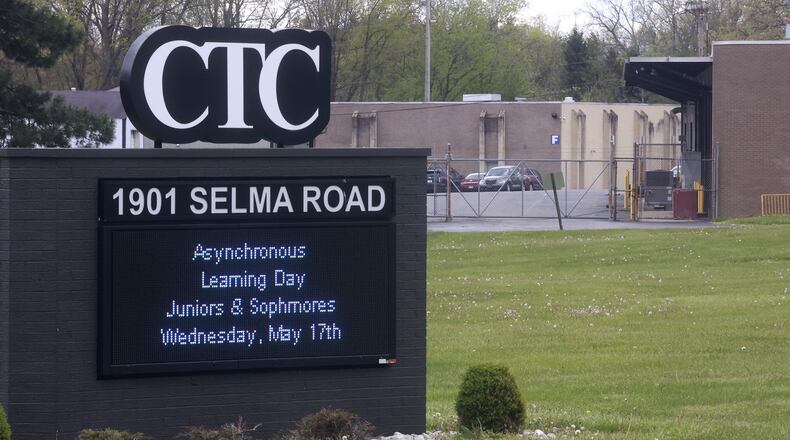The Career Technology Center’s roughly 60-year-old campus has seven existing buildings at 1901 Selma Road — just northeast of Clark State’s main campus on Leffel Lane. They will be replaced with a single, up-to-date facility that will include additional classroom facilities, equipment and furnishings needed for additional enrollment.
The new facility will be built immediately south of the current administrative building. School officials said it will be far enough away from the existing structures that it won’t interrupt school activities while it is being built.
CTC Superintendent Michelle Patrick said they are making progress on the new facility, but the first year is “largely behind-the-scenes work.”
Patrick said in addition to submitting information related to their credit rating and selling bonds, the CTC partnered with the Ohio Facilities Construction Commission (OFCC) to select the architect, Schorr Architects, and the construction manager, Summit Construction.
Patrick said they are now working on schematic designs and “cannot wait to share more of this” with their stakeholders.
“It feels amazing. After months of planning, coordination, and behind-the-scenes work, we’re finally at a stage where the progress we’re making is something the community can get excited about,” Patrick said.
“Now, we’re able to celebrate the fact that all of that hard work has paid off, and we’re on track to move forward. It’s exciting knowing we’re this much closer to seeing the new facility come to life and the next steps will be more tangible and exciting for the community,” she said.
In January, the center received a strong Aa2 rating from Moody’s Ratings for their financial stability and strong enrollment growth, and the bonds were assigned an Aa1 enhanced rating, Patrick said.
“The bond sale for local investors and on a national scale went very well, all bonds were sold,” she said. “CTC, in collaboration with OFCC, selected Schorr Architects to design the new facility. Schorr Architects brings decades of experience to the table and a stellar team of professionals.”
Credit: Bill Lackey
Credit: Bill Lackey
An “Aa2” bond rating indicates a high-quality bond with very low credit risk, which indicates a strong capacity to meet financial obligations, according to Moody’s.
The current campus is a little more than 182,000 square feet, and the new facility will be 29,000 square feet larger. The school currently has 756 students, but had to turn away more than 700 students over a 10-year span from 2013-23 and another 200 students for the 2024-25 year due to the lack of space.
The total project cost of $89.5 million includes three parts — the state OFCC contribution of about $38.7 million, and CTC’s share of about $24.5 million for the base cost plus the additional $26.2 million from the CTC for items they identified as a need that are not state-fundable.
These items include larger classrooms, larger lab spaces, food service space built to accommodate the number of students, accessibility for all, updated equipment, technology and infrastructure, and safety and security considerations, according to CTC officials.
Clark County residents approved a tax levy to build a new facility in last November’s election, after two previous rejections.
Voters approved the bond issue, with 56.5% for the levy and 43.5% against it. In previous votes, Clark County residents had rejected the plan twice, once by a margin of more than 10% and once by 7%.
Credit: Bill Lackey
Credit: Bill Lackey
Credit: Bill Lackey
Credit: Bill Lackey
The 1.4-mill bond and permanent improvement levy had two components — a 0.94-mill bond issuance with a 37-year duration, and a permanent tax levy at 0.46 mills for “permanent improvements” or facility upkeep.
The taxes will generate an estimated total of $4.5 million annually to pay off the long-term bonds, according to the Clark County Auditor’s Office. The cost to a homeowner will be about $49 annually per $100,000 of property value.
For more information on the project, visit www.scctc.org/facility-project/project-updates.
Credit: Bill Lackey
Credit: Bill Lackey
About the Author






